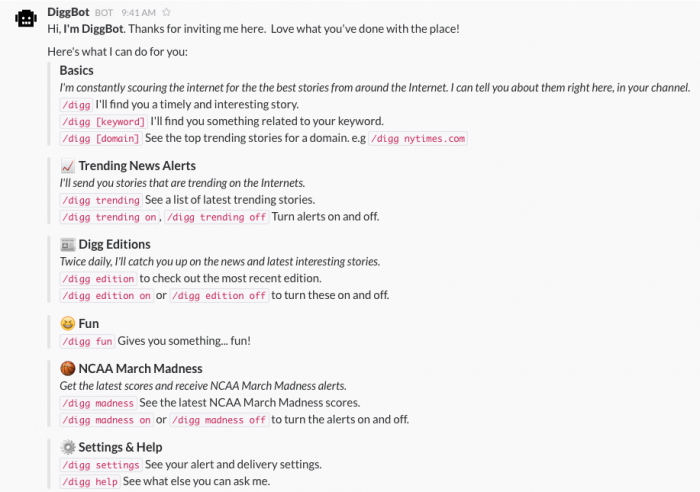/digg + some specific command in Slack will surface some of these relevant articles for you. Here’s what /digg niemanlab.org got us this morning (a somewhat odd mix of a Twitter-shortened link, a not particularly enlightening comment on a story, and a What We’re Reading link):

The bot will also send Digg-curated “package of articles and videos to catch you up” twice a day, for those not inclined to play around in Slack (you can turn that off by typing /digg edition off). Other commands currently available in this version include ones like /digg fun, which surfaces a random “fun” story; or /digg [keyword], which surfaces articles around that keyword; and even /digg madness, a limited-run command that can keep you posted on March Madness game scores.

According to Digg CEO Gary Liu, DiggBot will first be made available in Slack and “pop into other messaging playgrounds soon.” Why experiment with messaging? Liu explains:
There were 1.4 billion monthly active users on messaging apps by the end of 2015 (over 3 billion if you don’t de-dupe), sending over 90 trillion messages last year, and that number in aggregate is growing faster than any single network in the world. Our daily attention is increasingly captive within messaging, and we have noticed more and more users sharing links they’ve found on Digg directly into these apps. But there still isn’t an easy way to discover great content directly through messaging.
Leave a comment